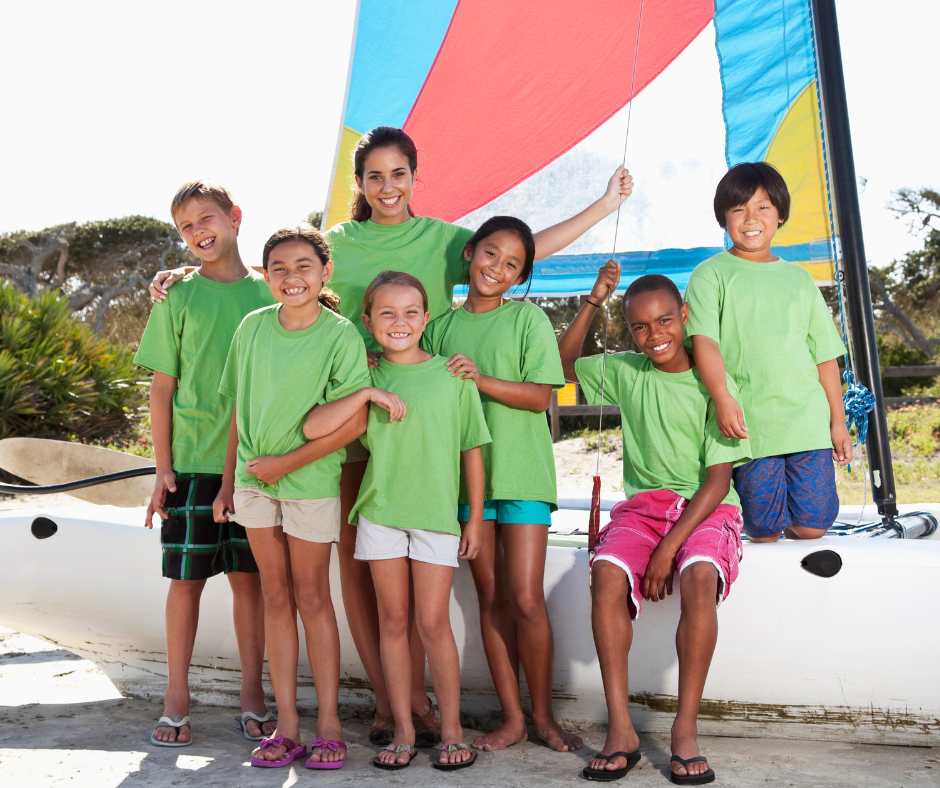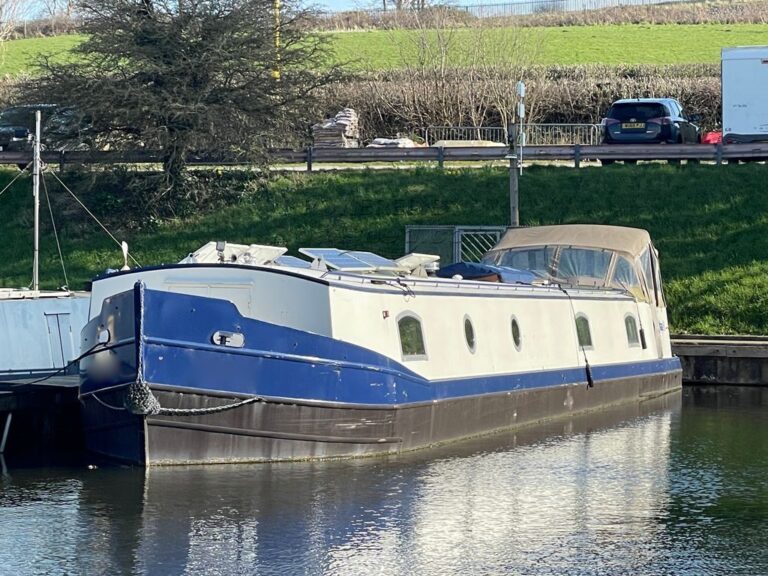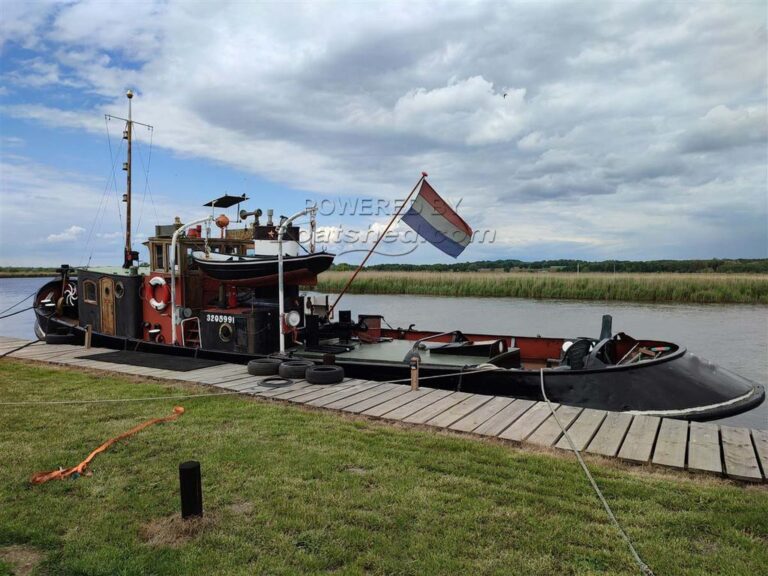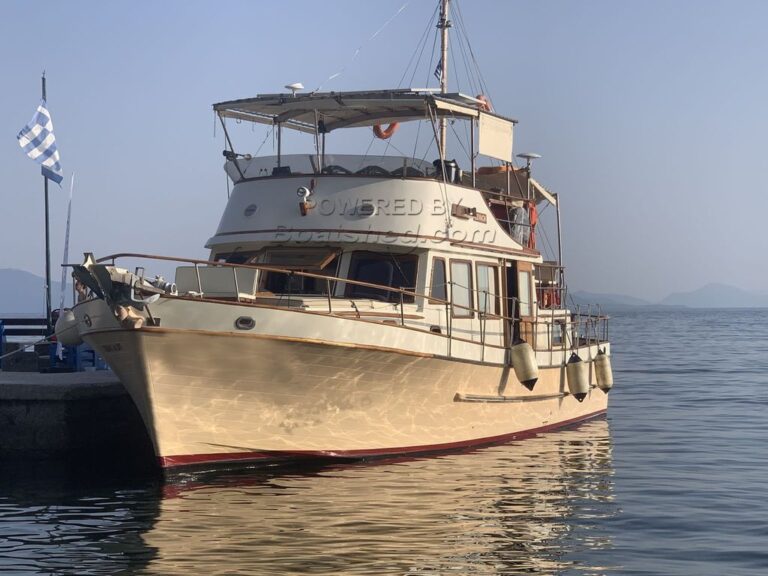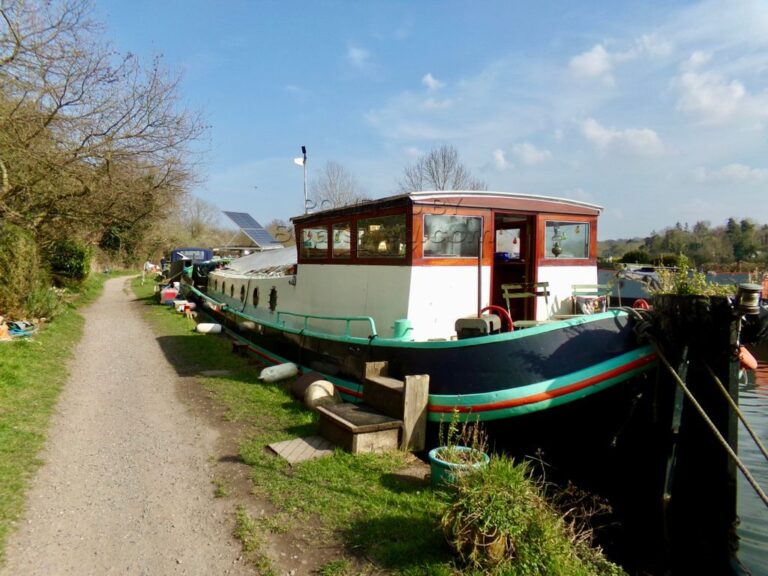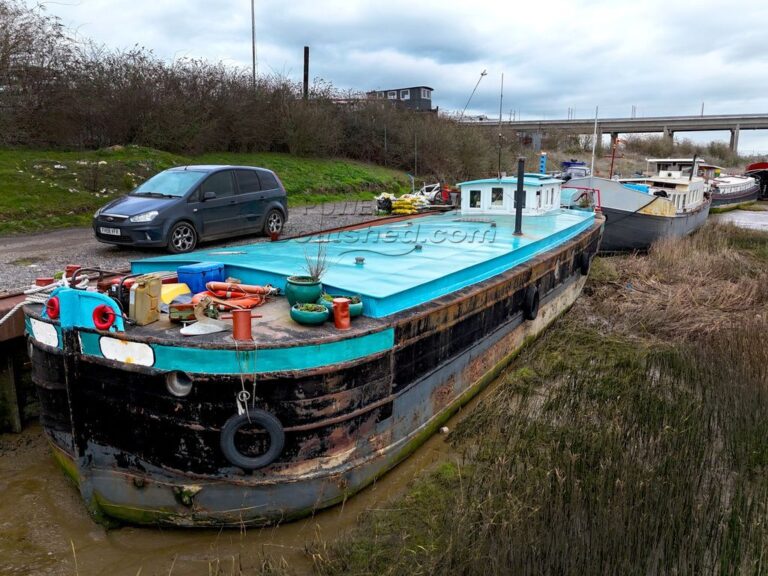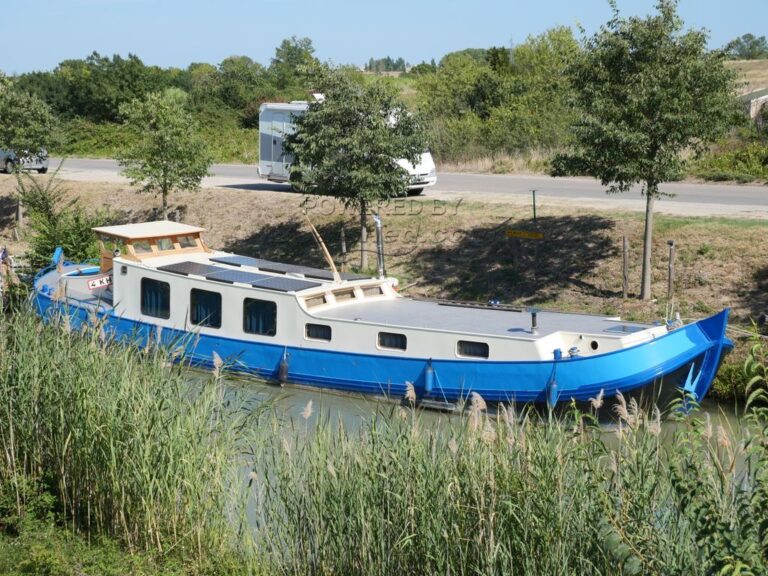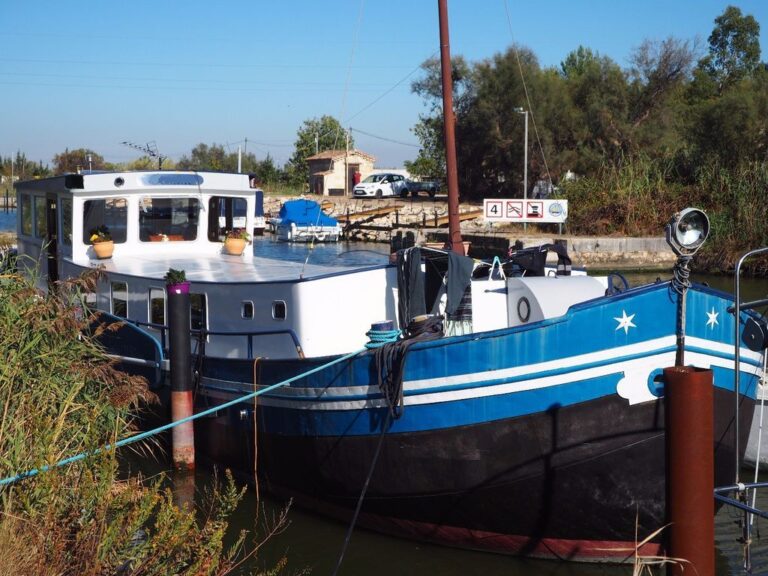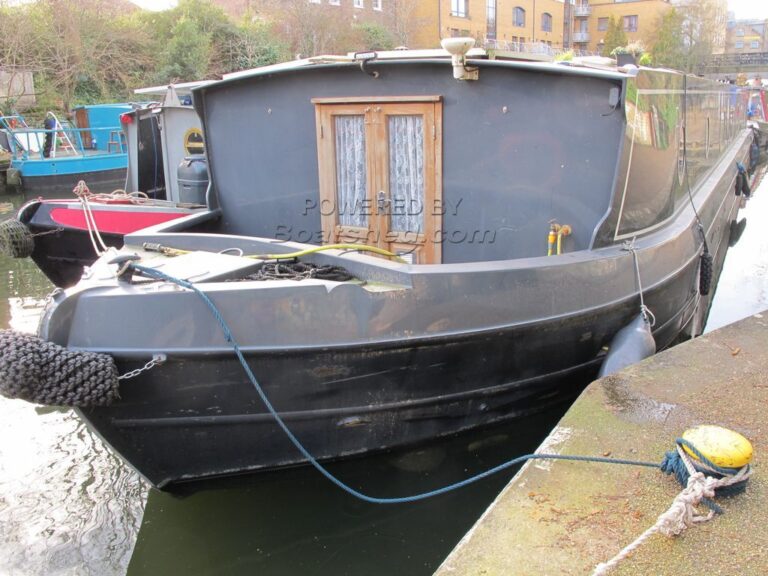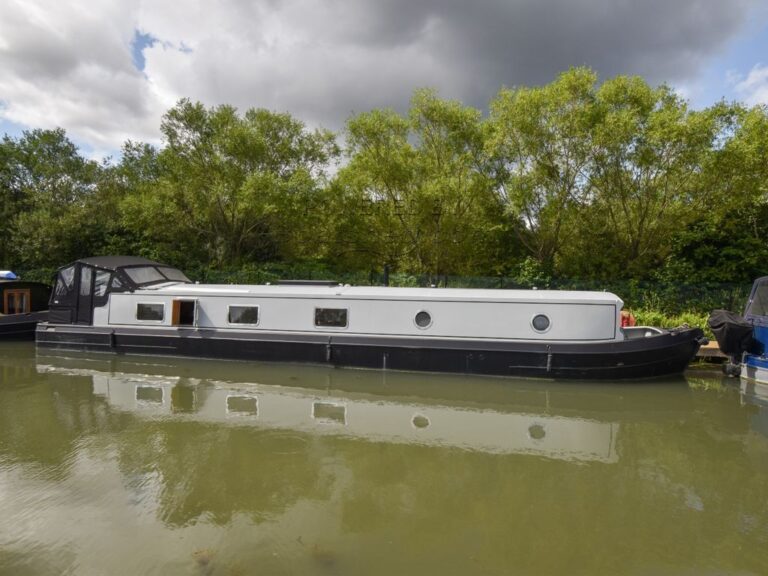Photo Credit – Oleksandr P
Have you ever found yourself plunged into an adventure that you were scarcely prepared for? I was about ten years old when my family ventured into the world of sailing. My dad, filled with enthusiasm, brought home a Laser 2000 from the Southampton Boat Show, an approachable vessel that promised countless family adventures on the open sea. The new year had barely begun when he decided it was the perfect time for our maiden voyage.
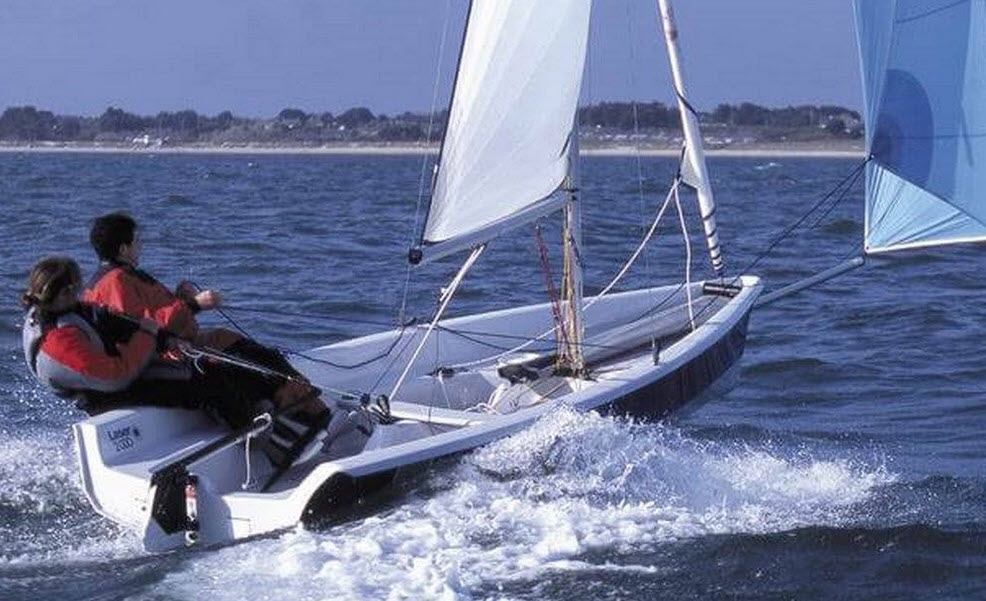
With winter’s chill still biting at the air, he, along with my mum and my youngest brother, who was no older than three at the time, set sail. The adventure took an unexpected turn when the boat capsized in the icy January waters. This harrowing experience was enough to deter my mum from sailing for years, and it took my youngest brother a long time to find his sea legs again. There are undoubtedly better ways to introduce kids to the wonders of sailing!
This early adventure of mine underscores a crucial point: sailing with kids is an incredible opportunity for family bonding and adventure, but it requires careful planning and consideration to ensure it’s a positive experience for everyone involved. In this blog, we’ll dive into family-friendly tips for safe and fun sailing adventures, aimed at helping you and your little ones navigate the high seas with joy and confidence.
Growing up with the sails as my backdrop, I experienced first-hand the unparalleled joy and bonding that sailing offers. The camaraderie at the sailing club, the thrill of competitive weekly racing, and the sense of community that enveloped me were not just facets of a sport but the building blocks of lifelong memories and friendships.

Sailing with children opens up a world of adventure
One that goes beyond the confines of our everyday lives. It’s an activity that not only teaches valuable skills like teamwork, responsibility, and respect for nature but also fosters a unique bond among family members. Sharing the excitement of catching the perfect wind, working together to navigate the waters, and celebrating the triumph of a race well-sailed are experiences that can strengthen relationships in profound ways.
Moreover, the sailing community is one of the most welcoming and supportive environments you can find. It’s a place where lifelong friendships are forged, and the spirit of cooperation and mutual respect runs deep. As I ventured from crewing for my dad to racing with friends I made at the club, I realised that sailing is more than a sport; it’s a way of life that embraces all ages.
This sense of belonging and collective passion for the sea makes sailing an incredible activity for families. Whether you’re gliding quietly over calm waters or racing heartily against the wind, sailing with kids promises not just fun and excitement but also an opportunity to grow together, learn from each other, and create lasting memories.
In this blog, we’ll explore how to ensure these sailing adventures are as safe and enjoyable as possible for the youngest sailors among us. From selecting the right boat to engaging in fun and educational activities, we’ll cover all you need to know to make your family’s sailing experience unforgettable.

Introducing Kids to Sailing
Introducing your children to the world of sailing is a gift of endless discovery, adventure, and learning. There are numerous paths to ignite this spark of maritime love in young hearts, each adaptable to your family’s needs, interests, and availability. Here’s how you can start their journey:
Join a Sailing Club
Introducing kids to the enchanting world of sailing can unfold in myriad ways, each with its own set of adventures and learnings. Reflecting on my own journey, it was around the familiar confines of my local sailing club that I honed my dinghy skills, absorbed not just through instruction but through the vibrant community that the club nurtured.
Sunday races were a familial affair, with my dad by my side, blending competition with companionship. Meanwhile, Thursday evenings were dedicated to us kids; the club provided Laser Picos for us to navigate under watchful eyes, ensuring safety while we manoeuvred with youthful zeal.
This wasn’t merely about sailing; it was an education in responsibility, teamwork, and environmental stewardship.
What set my sailing club apart was its foresight in recognising the potential in us, the young enthusiasts. Beyond just teaching us how to sail, the club offered programs that equipped experienced racers with the skills to teach others. Instructor and Assistant Instructor courses were not merely certifications; they were gateways to nurturing the next generation of sailors. For young adults, these opportunities were more than a summer job; they were stepping stones to potential careers in sailing, a testament to how deeply sailing can influence one’s life path.
This nurturing environment exemplified by sailing clubs underscores the profound impact of community and structured learning. The camaraderie experienced, the collective wisdom of seasoned sailors, and the structured programs designed for young learners all contribute to a rich, multifaceted education in sailing. Such programs, tailored to various age groups, ensure that every child finds their place in the sailing world, whether it’s mastering basic seamanship or delving into the strategic nuances of racing tactics.
Through this blend of community support and structured learning, sailing clubs not only teach children how to sail; they instill in them a sense of belonging, a deep respect for the marine environment, and the joy of shared adventures. This approach to introducing kids to sailing not only nurtures skilled sailors but also builds character and fosters lifelong passions.
Enroll in Sailing Schools
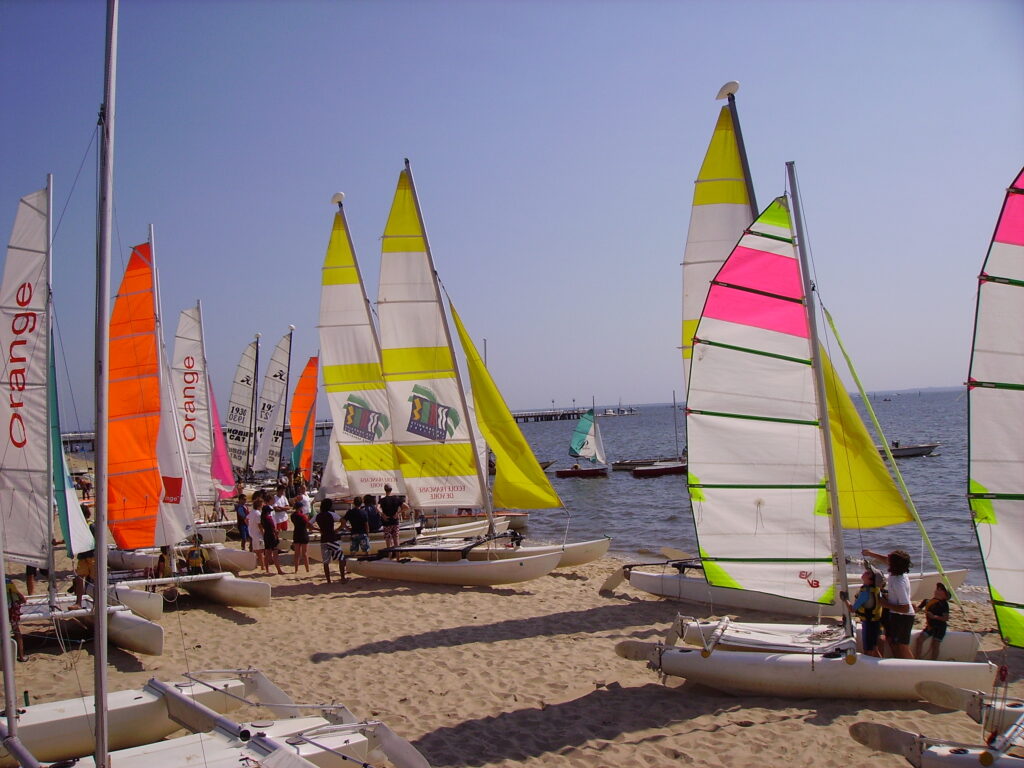
Another pivotal avenue through which children can embark on their sailing adventure is through specialized sailing schools. The essence of these schools lies in their commitment to quality instruction, tailored to meet the unique learning styles and needs of each child. During my tenure as an instructor at a sailing school, I witnessed firsthand the transformative impact this focused education had on young sailors.
The schools’ structured programs are meticulously designed to provide a well-rounded sailing education. Children are not just taught how to sail; they’re immersed in a curriculum that covers the gamut of sailing safety, skills, and ethics. This comprehensive approach ensures that every student develops a strong foundational understanding of sailing, an essential step for those aspiring to take their passion to the next level.
One of the most rewarding aspects of sailing schools is the opportunity for children to earn certifications. These aren’t just pieces of paper; they are badges of honor, symbolizing the skills and dedication of the young sailor. As an instructor guiding kids through the Royal Yachting Association (RYA) accreditations, the pride in their achievements was palpable. Not only did these certifications bolster their confidence on the water, but they also served as a tangible reassurance of their competence to themselves and their guardians.
Moreover, these certifications lay down a pathway for continuous advancement. Many of the kids I taught have carried forward their sailing journey, leveraging their early lessons as a springboard into more advanced sailing endeavors. This progression underscores the significant advantage that sailing schools offer: a launching pad not just for sailing as a hobby, but as a lifelong pursuit, potentially even leading to professional or competitive sailing careers.
Through sailing schools, children gain access to a depth of knowledge and experience, shared by professional instructors passionate about the sea. This environment of focused learning and achievement sets them on a course for success, instilling in them not just the love of sailing but a profound respect for the discipline and the myriad lessons it teaches about life, nature, and oneself.
Attend Summer Sailing Camps
In the heart of summer, summer camps stand as beacons of exploration for young minds. My experience teaching at these camps has illuminated their extraordinary potential to give kids a tantalising taste of the water. Designed as comprehensive playgrounds, these camps weave together sailing, kayaking, canoeing, and an array of land-based activities, crafting an immersive experience that captivates and entertains in equal measure.
The essence of these summer camps lies not in their ability to produce seasoned sailors—though they have sparked many a sailing career—but in their capacity to introduce the thrill of sailing in a safe, engaging environment. They serve as enchanting introductions to the world of water sports, offering children a glimpse into the joy and freedom that comes with navigating the water. This initial taste, though not deeply instructional in the technicalities of sailing, ignites a curiosity and a desire to explore further, whether through sailing courses, club memberships, or adventures on family outings.
Beyond the skills and thrills, these camps are crucibles of social interaction. In this spirited atmosphere, children find others with shared interests, laying the foundation for friendships that can endure long beyond the camp’s end. The shared experiences, from teaming up in a kayak to mastering the basics of sailing, foster a sense of camaraderie and collective achievement among the campers. It’s this blend of fun, learning, and social connection that makes summer camps an invaluable start to a child’s journey on the water.
For those serious about cultivating their child’s sailing skills, these camps should be viewed as the beginning of the journey—a spark to ignite a passion. While the depth of sailing instruction may be introductory, the exposure to the elements, the fundamentals of water safety, and the sheer joy of being on a boat lay a solid foundation. From this foundation, children can sail forward into more focused learning environments, equipped with a sense of adventure and a basic understanding of what it means to harness the wind.
Introduce Them Yourself
My own voyage into the world of sailing began not in a classroom, nor at a camp, but alongside my father, amidst the camaraderie and competition of weekly races. This introduction, although initially bumpy, was deeply personal and ignited a passion within me that has only grown over the years. The thrill of competition, combined with the shared experiences with my dad, provided a rich, immersive learning environment that rapidly accelerated my ascent up the learning curve of sailing skills.
Introducing your children to sailing personally, especially if you’re an enthusiast or a seasoned sailor, offers an unparalleled opportunity to connect and share your passion. This method allows for a tailored approach to learning, where lessons can be adapted to fit your child’s pace and interest, ensuring that each outing is both educational and enjoyable. More than just teaching them to sail, you’re imparting a love for the sea, a respect for nature, and the value of perseverance.
The personal touch in teaching sailing fosters an environment ripe for family bonding.
Through the shared goals of mastering the wind and waves, families can grow closer, creating lasting memories together.
The challenges faced and overcome together on the water strengthen the bonds of trust and mutual respect. This shared journey not only cultivates a child’s sailing abilities but also deepens the familial ties, making every victory on the water a collective triumph.
Reflecting on my own experiences, it’s clear that this approach to introducing sailing is immensely rewarding. The passion my dad showed for sailing was infectious, and sharing in that passion together was invaluable. It wasn’t just about learning to sail; it was about sharing in an adventure, in challenges, and in the joy of sailing as a family. This method of introduction is something I wholeheartedly recommend. It offers a holistic experience that goes beyond sailing, nurturing a deep-seated passion and love for the sport while also bringing families closer together.
Sailing with Kids – Tips for a Smooth Introduction
Start on Land
Embarking on the journey of introducing your kids to sailing involves more than just time spent on the water; it begins with the fundamentals, often taught on land, well before setting foot on a boat. This preparatory stage is crucial, serving not only to educate but to instil confidence and curiosity about the maritime world.
The beauty of sailing is that it’s not just a sport or a hobby; it’s a comprehensive learning experience that can start with the simplest of activities.
Imagine spending a rainy afternoon teaching your kids how to tie various knots, a skill as essential to sailing as steering the boat itself. These moments, seemingly small, lay the groundwork for understanding the intricacies and safety of sailing.
Setting up your boat becomes not just a task to be completed but an opportunity for learning and bonding. With your kid by your side, each action, from rigging sails to securing lines, becomes a teachable moment. Explaining what you’re doing and why each step matters helps demystify the sailing process and makes your child feel involved and valued. It’s these hands-on experiences that contribute to a deeper understanding and appreciation of sailing.
Starting with basic concepts such as wind directions, boat parts, and simple tasks while still on land offers a gentle introduction to the vast and sometimes overwhelming world of sailing. This approach allows children to absorb information at their own pace, ask questions, and make connections between what they learn on land and what they will later experience on the water.
By integrating sailing into everyday moments and making learning a shared adventure, you’re not only preparing your child for the practical aspects of sailing but also weaving the love for the sea into the fabric of their lives. This methodical yet personal approach to teaching sailing cultivates a sense of competence and confidence in young sailors, ensuring they step onto the boat with excitement and a strong foundation of knowledge.
Keep It Fun
In the quest to instil a passion for sailing in children, the emphasis must always be on making the journey as enjoyable as it is educational. Sailing, with its blend of adventure and technical skill, presents a unique opportunity to turn learning into an exhilarating game. The secret lies in the way we choose to engage our young sailors, transforming lessons into playful challenges and celebrating every milestone, no matter how small.
Consider the art of knot-tying, a fundamental skill for any sailor. Rather than presenting it as a mere task, imagine framing it as a challenge: “Can you tie a bowline one-handed?” Suddenly, what was once a mundane skill becomes a thrilling quest, sparking curiosity and determination. These playful challenges not only make the learning process more engaging but also help in developing dexterity and confidence in handling sailing equipment.
The importance of celebrating achievements cannot be overstated. Every time a child masters a new skill, big or small, it’s an opportunity to celebrate. These moments of recognition fuel their enthusiasm and encourage them to embrace new challenges. Whether it’s successfully tying a knot, understanding wind directions, or mastering a new sailing term, each achievement is a step forward in their sailing journey.
By keeping the atmosphere light and fun, we can help children associate sailing with positive experiences. This approach goes beyond teaching them the technicalities of sailing; it’s about nurturing a lifelong love for the sea and sailing. Incorporating games, challenges, and celebrations into the learning process ensures that children are not just passive participants but active, excited learners eager to discover what’s next.
In this way, sailing becomes more than just a sport or hobby; it transforms into a playground of endless possibilities where learning is driven by curiosity, joy, and a sense of achievement. Keeping it fun is not just a strategy; it’s the very essence of teaching sailing to children, ensuring that their first foray into the world of sailing is filled with laughter, excitement, and a deep-seated desire to explore the seas.
Safety First
At the core of any sailing adventure with children is the unwavering principle of safety first. It’s essential to instill an understanding and respect for the sea’s power, alongside the knowledge that, with proper precautions, sailing is a joyous and safe activity. The key lies in teaching safety measures not as limitations, but as enablers of freedom on the water.
From the moment they step aboard, children should be familiarised with wearing life jackets or buoyancy aids. This practice, non-negotiable and framed positively, becomes as natural as putting on a seatbelt in a car. It’s not just about compliance; it’s about making safety gear part of the adventure gear, something that empowers them to explore the seas with confidence.
Introducing safety features and procedures without inducing fear is an art. For instance, capsize drills, rather than being a daunting prospect, can be approached as an exciting part of learning to sail. These drills demystify the experience of falling into the water, transforming what could be a fear into just another part of the sailing adventure. Practicing these drills in a controlled and supportive environment teaches resilience, shows that capsizing is not a catastrophe but a manageable, sometimes even fun, part of sailing.
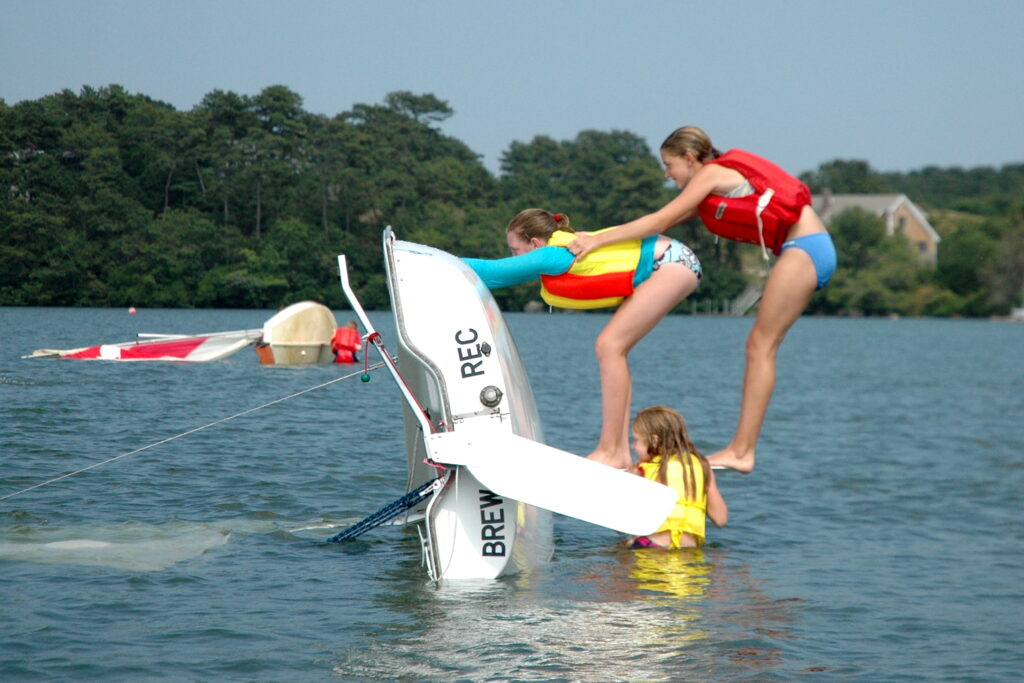
Photo Credit – Pete
This approach to safety training — emphasising practical, hands-on experiences — encourages a sense of security and self-reliance among young sailors. Knowing how to react, what to do in an emergency, and how to keep themselves and their crew safe makes the vastness of the sea less intimidating. It builds a foundation of confidence that extends beyond sailing, fostering a mindset of preparedness and adaptability.
By weaving safety into the fabric of sailing education in this way, we not only protect our young sailors but also empower them. We equip them with the knowledge and skills to navigate not just the calm waters but the storms as well, ensuring they carry a sense of safety as their constant companion on every maritime journey.
Be Patient
In the diverse world of young sailors, patience is not just a virtue; it’s an essential component of teaching. Every child embarks on their sailing journey with a distinct set of fears, expectations, and levels of enthusiasm. Some might grasp the ropes eagerly, their eyes alight with excitement at the very first gust of wind. Others, however, may tread more cautiously, their confidence shaken by the vastness of the sea or perhaps a previous unsettling experience.
My youngest brother’s story is a testament to the importance of patience in these diverse journeys. Following a chilly capsize one January, his initial excitement for sailing was replaced by reluctance. The cold waters of that day lingered longer in his memory than the joy of being on the boat. It wasn’t until we embarked on a holiday to the Mediterranean, where the waters promised warmth rather than discomfort, that he reconsidered setting foot on a sailboat again. It was the allure of the inviting sea that coaxed him back into sailing, reigniting his passion in the balmy embrace of the Mediterranean.
This experience underscores a crucial lesson: if a child does not take to sailing with immediate enthusiasm, it may be time to change tack. Adjusting the approach to suit their comfort level, whether it’s waiting for warmer conditions, choosing calmer waters, or even just spending more time on land-based simulations, can make all the difference. The goal is to transform sailing from a daunting challenge into an inviting adventure.
Encouragement plays a pivotal role in this process. Celebrating small victories, providing constant reassurance, and demonstrating unwavering support are key to building their confidence.
Just as the sea changes, so too do the ways in which children may come to embrace sailing. What’s important is not how quickly they take to it, but that they find their own path to loving it.
In teaching sailing to children, we must remember that our role is not to hurry them to proficiency but to guide them with patience and understanding. Their pace is not an obstacle but an opportunity to explore different facets of sailing that resonate with their interests and comfort levels. With patience and encouragement, we can help light the spark of passion for sailing in every child, ensuring it’s a flame that burns brightly on their own terms.
By considering these pathways and tips, you’re not just introducing your kids to sailing; you’re opening the door to a world of adventures that will teach them about nature, themselves, and the value of teamwork. Whether through a structured program or your own guidance, the journey of a thousand nautical miles begins with a single sail.
Sailing Holidays: Ensuring a Safe and Joyful Experience for the Family
Embarking on a sailing holiday with your family offers an unparalleled opportunity for bonding, adventure, and education. To ensure that this experience is as enjoyable as it is memorable, careful planning is essential. This begins with preparation before setting sail and extends to choosing the right boat for your family’s needs.
Preparing for the Trip
Educating the Kids: Sparking Excitement for the Journey
The magic of a sailing holiday begins long before you set foot on the boat—it starts with the spark of excitement in the eyes of your children as they anticipate the adventure ahead. Transforming the educational aspects of sailing into moments of wonder and anticipation is key to preparing them not just as crew members but as enthusiastic explorers.
Igniting Imagination with Destinations: Begin by sharing photos and stories of mesmerising destinations you plan to visit. Visual storytelling about the clear waters, sandy beaches, and hidden coves you’ll explore can captivate their imagination. This visual journey can help them envision the adventure, making them an integral part of the planning process.
Daydreaming Together: Encourage your children to share their daydreams about the trip. What are they most excited to see? Do they have a fantasy of swimming with dolphins or finding a secluded beach? This shared daydreaming not only builds excitement but also fosters a deeper emotional connection to the journey and the sea.
Anticipating Fun Activities: Highlight the fun aspects of the holiday, like swimming in serene waters, setting up beachside BBQs, or simply lounging under the stars. Discussing these activities can make the educational parts of sailing—like learning knots or understanding wind direction—feel like small, manageable steps towards a treasure trove of experiences.
Involving Them in the Planning: Make them feel like valuable crew members by involving them in the planning process. Let them choose some activities or pick out destinations. This involvement gives them a sense of ownership and responsibility, enhancing their excitement and engagement.
By weaving the educational elements of sailing with the anticipation of unforgettable experiences, you’re not just preparing your kids for a sailing holiday; you’re opening their hearts and minds to the wonders of the sea. This approach ensures that when the day comes to set sail, your children are not just ready but eager to embark on the sailing adventure of a lifetime.
What to Pack: Essentials for an Engaging and Safe Sailing Holiday
Preparing for a sailing holiday involves a unique blend of practicality and foresight, especially when it comes to packing for children. Beyond the standard travel checklist, there are specific items that can make the journey both safer and more enjoyable for your young adventurers.
Safety First: Naturally, safety gear is non-negotiable. Life jackets designed for children are a must, ensuring they are equipped for safety from the moment they step aboard. Equally important are sun protection measures; high-SPF waterproof suncream is essential to protect against the sun’s reflection on the water. However, the sea’s moods can change, and wet weather gear becomes invaluable. As we often joked, forgetting wet weather gear almost guarantees a bout of bad weather. Ensuring your kids are prepared for all conditions is key to their comfort and safety. Sea sickness pills like Stugeron can also help avoid unpleasant experiences.
Engagement and Entertainment: Keeping children engaged and entertained on the sea requires thoughtful preparation. Waterproof cameras and binoculars offer endless entertainment, allowing kids to capture memories and observe marine life, turning them into young explorers. Books on marine life can also enrich their experience, providing context and learning opportunities about the wonders they’ll encounter.
When considering toys and activities, practicality should guide your choices. Items should be compact, easy to pack, and durable against the elements. For instance, while Lego sets might be a favourite on land, they’re not the best fit for the sea, where pieces can easily be lost and models damaged. Instead, opt for compact, travel-friendly games and activities that can withstand the rigors of sailing life.
Practical Tips: Remember, space on a boat is at a premium, and the marine environment can be harsh on fragile items. Select items that can easily be stored and are robust enough to handle a splash or two. This careful selection ensures that every piece of gear and entertainment you bring contributes positively to the sailing experience.
Packing for a sailing holiday with kids is about striking a balance between preparation and flexibility. By equipping them with the right gear for safety and fun, you’re setting the stage for a sailing adventure that is as safe as it is memorable, ensuring that every moment spent on the water is an opportunity for discovery and joy.
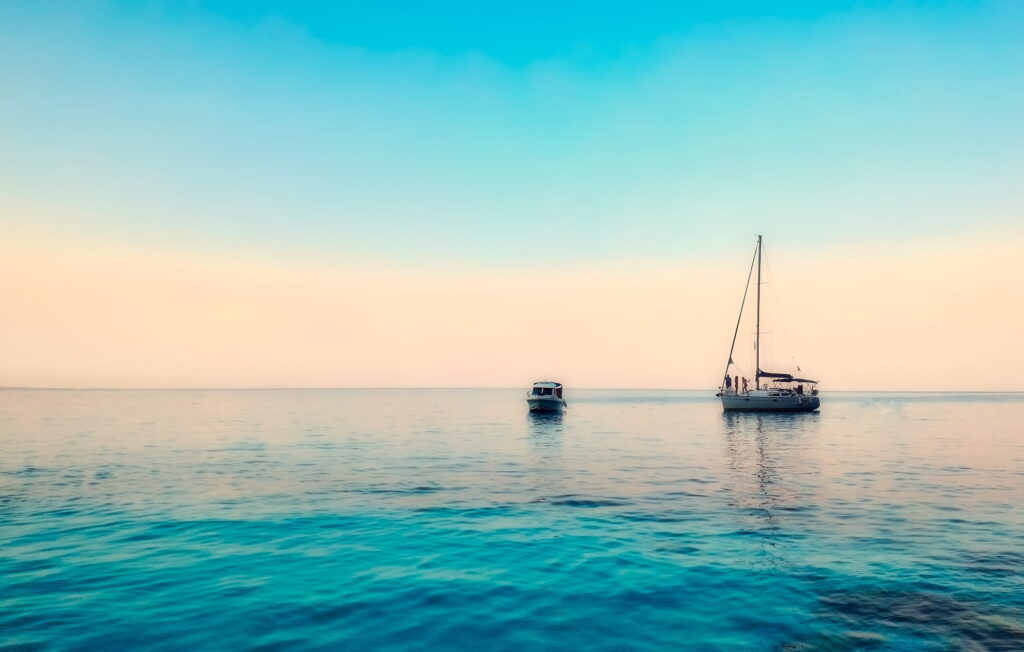
Choosing the Right Boat
When planning a sailing holiday, the selection of your vessel is a decision of paramount importance. The safety and comfort of your family hinge on this choice, making it crucial to opt for boats renowned for their stability and child-friendly features.
Key Safety Features
A child-friendly boat is equipped with features designed to keep your youngest crew members safe. Look for boats with secure railings and nettings around the deck to prevent accidental falls. Child-sized life vests should be readily available, ensuring that everyone on board has access to appropriately sized safety gear. Modern navigational aids like GPS and emergency communication devices are also essential, providing an added layer of security for navigating and calling for help if necessary.
Chartering vs. Personal Boating: The approach to ensuring these safety features may differ based on whether you’re chartering a boat or sailing on your own or a friend’s vessel. Charter companies, which are typically certified, usually equip their yachts with the necessary safety equipment, making them a reliable choice for families looking to enjoy a hassle-free sailing experience. These boats are often inspected regularly and maintained to meet specific safety standards, offering peace of mind to those renting them.
However, if you’re setting sail on your own boat or a friend’s, a thorough check is essential. It’s imperative to ensure that the boat meets all safety requirements and is equipped with the necessary features to protect your family. This might include a personal review of the boat’s safety gear, from life vests to emergency communication devices, and even the installation of additional safety measures if needed.
Comfort Considerations: Simplifying Sailing for Family Enjoyment
While safety forms the bedrock of a memorable sailing holiday, the comfort of your family is equally vital in ensuring the experience is enjoyable and relaxing. Beyond the essential safety features, the choice of boat can significantly influence how comfortable and engaged your family feels during your time at sea.
Space and Amenities: Opt for boats that provide ample space for both indoor and outdoor family activities. A well-equipped galley allows for the preparation of meals together, turning cooking into an enjoyable part of the adventure. Comfortable sleeping arrangements ensure restful nights under the stars, while shaded areas offer a respite from the sun, making relaxation onboard a pleasure.
Ease of Sailing: To make the sailing experience as enjoyable as possible for everyone, including the kids, consider boats designed with ease of use in mind. Features such as furling sails and easy reefing systems can transform sailing from a task-laden chore into a smooth and accessible activity. By minimising the manual effort required to sail, children and adults alike can engage more fully in the adventure, learning the ropes without the intimidation of complex manoeuvres.
Removing the ‘Hard Work’: The aim is to strip away the perception of sailing as hard work, allowing the family to focus on the joy and freedom that comes with gliding through the waters. When children see sailing as an accessible and fun activity, rather than an arduous task, their enthusiasm and willingness to participate soar. This approach not only makes the sailing holiday more pleasant but also encourages a deeper interest in sailing as a family hobby.
In selecting a boat for your family sailing holiday, prioritising features that promote both safety and comfort—coupled with an emphasis on ease of use—can ensure a smooth, enjoyable experience for all. By doing so, you set the stage for a holiday filled with joy, relaxation, and unforgettable memories on the water.
By meticulously preparing for your trip and choosing a boat that aligns with your family’s safety and comfort needs, you’re setting the stage for a sailing holiday that will be cherished for years to come. Such holidays are not just about exploring new waters; they’re about creating lasting memories, fostering a love for the sea among your children, and enjoying the beauty of the world from the unique perspective of your family’s own vessel.
Dealing with Challenges
Dealing with Challenges: Seasickness Prevention and Management
A common hurdle for many sailors, seasoned and novices alike, is the challenge of seasickness. Understanding its causes and learning how to manage it can significantly improve the sailing experience for everyone onboard.
Understanding Seasickness: The disorientation leading to seasickness stems from a conflict between what our eyes see and what our inner ears, which help control balance, perceive. It’s an intriguing defense mechanism; the brain suspects it’s been poisoned when the input from our eyes and balance organs don’t match, triggering nausea and sickness as a way to “expel” the supposed toxin.
Prevention Strategies:
- Eyes on the Horizon: One practical tip that has stood the test of time is to keep your gaze fixed on the horizon when feeling seasick. This simple act can help realign the sensory input from your eyes and inner ears, reducing the feelings of nausea.
- Stay Above Deck: Avoid going below decks if you’re feeling queasy. The closed, often poorly ventilated spaces below can exacerbate seasickness. Staying on deck allows for better ventilation and a consistent horizon view, both of which can help alleviate symptoms.
- Seasickness Medication: Having seasickness pills like Stugeron on hand is an essential part of your packing list. These medications can be highly effective in preventing the onset of seasickness or managing its symptoms if they arise. However, it’s important to consult with a healthcare provider before the trip to ensure they’re suitable for everyone in your family.
Management Techniques:
- Ginger: Natural remedies such as ginger, in the form of candies, tea, or even raw, have been known to soothe seasickness symptoms thanks to ginger’s anti-nausea properties.
- Hydration and Light Meals: Keeping hydrated and opting for light, non-greasy meals can also help keep seasickness at bay. Heavy meals might exacerbate symptoms, so it’s best to eat little and often.
Understanding and preparing for seasickness can transform a potentially challenging aspect of sailing into a manageable one. With the right precautions and responses, everyone on board can focus more on the joys of sailing and less on the fear of feeling unwell. Remember, a well-prepared sailor is a happy sailor.
Keeping Kids Engaged: Combating Boredom and Reluctance
A sailing journey offers boundless opportunities for adventure and learning, yet keeping kids fully engaged and eager can sometimes be a challenge. Addressing boredom and overcoming reluctance are crucial aspects of ensuring a fulfilling sailing experience for the youngest crew members.
Mitigating Boredom through Active Participation
The key to mitigating boredom is to involve kids in the sailing process, making them feel like an integral part of the crew. Here are several strategies to keep them engaged:
- Sail Trimming and Navigation: Teach them about trimming sails and understanding wind directions by watching the telltales. Engaging in these activities helps them grasp the impact of wind on sailing and instills a sense of contribution.
- Taking the Helm: Allow kids to steer the boat under your guidance. Standing behind them as they helm offers them a sense of control and excitement, fostering a deeper interest in sailing.
- Environmental Engagement: Assign them the role of lookout for specific buoys, marine life, or other boats. This not only keeps them attentive but also enhances their observational skills and appreciation for marine environments.
Addressing Reluctance with Flexibility
Tackling reluctance often requires a more nuanced approach, recognizing that each child’s interests and comfort levels are unique. Here are ways to adapt:
- Variety in Sailing Experiences: Not every child may enjoy the same aspects of sailing. While some may find joy in the quiet camaraderie of family sailing, others might thrive in the social settings of sailing camps with peers. Offering a variety of sailing experiences can help identify what excites them most about being on the water.
- Gradual Introduction: For some children, especially those with past negative experiences or initial hesitance, a gradual introduction to sailing might be more effective. This could mean starting with short, leisurely trips in calm waters or participating in shore-based sailing activities before venturing into more extensive sailing adventures.
- Alternative Settings: Changing the setting can also make a significant difference. A sailing holiday in the warm, clear waters of the Mediterranean, for instance, might appeal more than colder, rougher seas. The allure of swimming in serene bays or exploring new beaches can reignite their enthusiasm for sailing.
The key to keeping kids engaged in sailing lies in understanding their perspectives and interests. By actively involving them in the sailing process and being flexible in approach, you can turn potential boredom or reluctance into a passion for sailing. Remember, the goal is to foster a lifelong love for the sea, nurtured through positive experiences and shared adventures.
Final Thoughts
As we’ve navigated through the essentials of sailing with kids, we’ve covered a broad spectrum of considerations, from preparing for the trip with the right safety measures and engaging educational activities to choosing a suitable boat that ensures both safety and comfort for the family. We delved into strategies to keep kids engaged, combating boredom and reluctance by involving them in the sailing process and being flexible in our approach to introducing them to the joys of sailing. We’ve explored the multifaceted world of sailing with kids, touching on key aspects from the initial steps of preparing for the trip and selecting the right boat to ensuring safety and comfort for the entire family. We ventured into the heart of sailing by introducing kids to sail, highlighting various pathways such as sailing clubs, schools, and summer camps, which not only teach the fundamentals of sailing but also ignite a passion for this splendid activity.
Sailing presents a unique opportunity for families to bond, learn, and grow together amidst the natural beauty of the sea. It’s a chance to instil in children a love for adventure, a respect for nature, and invaluable skills that extend beyond sailing itself. The experiences shared and memories created on these adventures are treasures that far outweigh the challenges faced along the way.
To families contemplating a sailing adventure, know that the journey is as rewarding as it is educational. There’s a world of discovery waiting on the waters, promising both the thrill of exploration and the tranquility of seafaring life. Embrace the opportunity to spend quality time together, forging connections and experiences that will be cherished for years to come.
But our journey doesn’t end here. The sea is vast, and so are the experiences and wisdom of its sailors. We invite you to share your own stories, tips, and moments of wonder. Have you found innovative ways to engage your little sailors? Perhaps you’ve discovered a hidden gem during your sailing holidays that you’re eager to share. By contributing your insights and anecdotes, you help enrich our community of sailing enthusiasts, making the vast sea a little more familiar and welcoming for all.
Email hello@sailors.project1031.com and share your story.
Let’s continue to inspire each other, fostering a love for sailing that can be passed down through generations. Whether you’re a seasoned sailor or contemplating your maiden voyage with your family, your experiences are a beacon for others. Share your stories, and let’s navigate these waters together, building a community where every family can find their sea legs and sail towards unforgettable adventures.
References and Resources
For further exploration and a deeper dive into the world of sailing with children, the following resources offer a wealth of information, tips, and community support:
- Royal Yachting Association (RYA): A comprehensive guide to getting children started in sailing, featuring courses and certifications for young sailors. Visit RYA
- Irish Sailing Association Youth Sailing: Offers detailed insights into youth sailing programs across Ireland, designed to introduce children to sailing in a fun, safe, and structured environment. Suitable for families looking to explore the North Atlantic waters. Visit Irish Sailing
- Sailing World’s Guide to Family Sailing: An article filled with expert advice on making sailing with your family a rewarding experience. Read at Sailing World
- European Sailing Federation (EUROSAF) Youth Sailing: Provides information on youth sailing events, training, and resources across Europe, fostering a strong sailing foundation for the younger generation. Explore EUROSAF
- Fédération Française de Voile (FFV) – Youth Sailing: The French Sailing Federation provides resources, club listings, and information on youth sailing programs across France, promoting sailing in the Atlantic and the Mediterranean. Visit FFV
- Real Federación Española de Vela (RFEV) – Vela Infantil: The Royal Spanish Sailing Federation features programs and competitions for children and youth, aiming to foster a love for sailing in Spain’s coastal and inland waters. Visit RFEV
- Hellenic Sailing Federation – Youth Sailing in Greece: Offers insights into sailing camps, schools, and competitions for young sailors in Greece, encouraging exploration of the Greek islands and seas. Visit Hellenic Sailing Federation
- Kids Afloat: A blog dedicated to sharing stories and tips for sailing with children, from picking the right gear to engaging activities at sea. Visit Kids Afloat
- National Geographic Kids: For fun and educational content about marine life, which can excite kids about the wonders they’ll encounter at sea. Explore National Geographic Kids
These resources are excellent starting points for families looking to embark on their sailing journey. Whether you’re seeking structured learning through certified programs, tips on family sailing dynamics, or simply looking to inspire your kids with the marvels of the marine world, there’s something for everyone.


